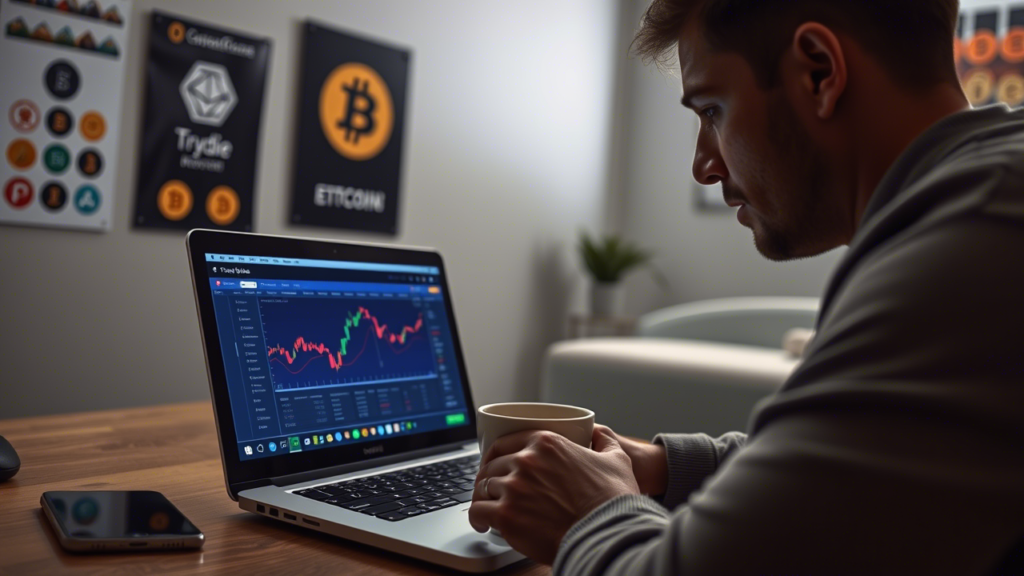Introduction
The rise of cryptocurrency has brought numerous opportunities for investors in the Philippines. However, with these opportunities comes an increasing number of scams and fake trading platforms designed to deceive unsuspecting traders. In this guide, you’ll learn how to identify fake crypto trading in the Philippines, avoid fraudulent schemes, and protect your investments.
What Is Fake Crypto Trading?
Fake crypto trading refers to fraudulent schemes where scammers create deceptive platforms, impersonate legitimate exchanges, or use Ponzi schemes to steal money from traders. These scams are designed to lure investors with promises of high returns but ultimately result in financial loss.
Common Signs of Fake Crypto Trading in the Philippines
1. Unrealistic Promises of High Returns
If a platform guarantees unrealistic profits with minimal or no risk, it’s a red flag. Legitimate trading always involves risks.
2. No Regulatory Approval
In the Philippines, crypto exchanges must be registered with the Bangko Sentral ng Pilipinas (BSP). Unlicensed platforms are likely scams.
3. Lack of Transparency
Scam platforms hide crucial information such as company details, licensing, and the identity of founders. A legitimate exchange will always provide clear details.
4. Poor Website Security
Fake platforms often have unsecured websites (no HTTPS), spelling errors, and amateur design.
5. Pressure to Invest Quickly
Scammers often create urgency by claiming limited-time offers or exclusive deals. Avoid platforms that pressure you to deposit funds immediately.
6. No Customer Support or Fake Reviews
Scammers create fake reviews to build credibility. Always check independent review platforms and verify user experiences.
Types of Fake Crypto Trading Scams
1. Ponzi Schemes
Scams that rely on recruiting new investors to pay earlier investors rather than legitimate trading.
2. Fake Crypto Exchanges
Platforms that mimic legitimate exchanges but disappear once users deposit funds.
3. Phishing Scams
Fraudulent websites or emails designed to steal login credentials.
4. Pump-and-Dump Schemes
Scammers artificially inflate a coin’s price before selling off their holdings, leaving others with losses.
5. Fake Celebrity Endorsements
Fraudulent schemes use fake testimonials from celebrities or influencers to lure investors.
How to Verify Legitimate Crypto Trading Platforms
1. Check BSP Registration
Ensure the platform is licensed by the Bangko Sentral ng Pilipinas (BSP).
2. Research Company Details
Look up the company’s history, team members, and online presence.
3. Read Independent Reviews
Use sources like Trustpilot or Reddit to check user experiences.
4. Test Customer Support
A genuine platform has responsive customer support.
5. Verify Security Features
Ensure the platform has 2FA authentication, SSL encryption, and cold wallet storage.
What to Do If You’ve Been Scammed
1. Report to Authorities
File a complaint with the Philippine National Police Anti-Cybercrime Group (PNP-ACG) or the Securities and Exchange Commission (SEC).
2. Notify Your Bank
If you used a bank transfer, inform your bank immediately.
3. Warn Others
Share your experience to prevent others from falling for the scam.
Conclusion
Fake crypto trading in the Philippines is a growing concern. By staying informed, verifying platforms, and avoiding suspicious schemes, you can protect your investments. Always trade with caution and choose regulated exchanges.
FAQs
1. How do I check if a crypto exchange is legitimate in the Philippines?
Verify its registration with the Bangko Sentral ng Pilipinas (BSP) and read independent reviews.
2. What should I do if I lose money in a fake crypto trading scam?
Report to PNP-ACG, the SEC, and inform your bank to attempt a chargeback.
3. Are all unlicensed crypto exchanges scams?
Not necessarily, but trading on unregulated platforms carries higher risks.
4. How can I spot a fake cryptocurrency exchange?
Look for red flags like no regulatory approval, lack of transparency, and unrealistic profit promises.
5. Is crypto trading legal in the Philippines?
Yes, but only through BSP-registered exchanges.
6. What are the safest crypto exchanges in the Philippines?
Some of the safest include Coins.ph, PDAX, and Binance (BSP-approved version).
7. How do scammers trick crypto investors?
They use fake websites, phishing scams, Ponzi schemes, and fake endorsements.
8. Can I recover lost crypto funds from a scam?
Recovery is difficult, but reporting the scam can help authorities track the fraudsters.
